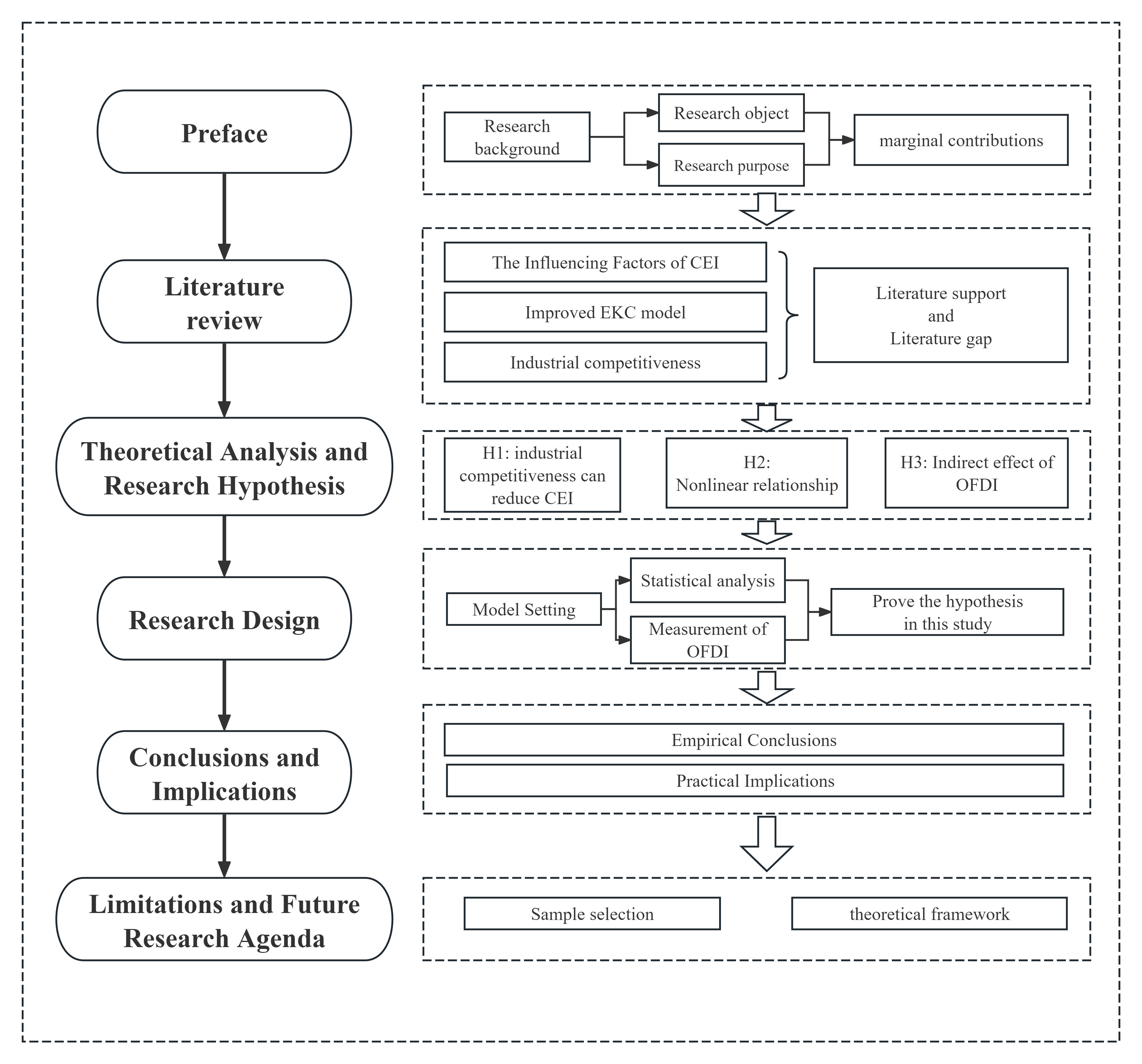
Industrial sector is regarded as the main source of carbon dioxide emission, and prior studies have mostly examined the effects of carbon reduction policies on the competitiveness of industries. However, whether and how industrial competitiveness affects carbon emission intensity (CEI) remains unclear. We develop the Environmental Kuznets Curve model (EKC) which introduces the characteristics of carbon dioxide and industrial life cycle. Additionally, we empirically investigate the impact mechanism of industrial competitiveness on CEI based on the panel data of 30 provinces in China from 2008 to 2019. The results show that: (1) Improving industrial competitiveness can significantly reduce CEI, in which outward foreign direct investment (OFDI) has a partial mediating role. (2) regional heterogeneities exist in the carbon mitigating effect of the industrial competitiveness, as it is larger and significant in the Northeast and West, but it is not significant in the East and Central. (3) The demarcation point between the investment-driven stage and the innovation-driven stage is -0.6993, and the demarcation point between the innovation-driven stage and the wealth-driven stage is -0.2776. (4) The carbon reduction effect of the industrial competitiveness is larger and significant in the investment-driven stage and the innovation-driven stage, but it is not significant in the wealth-driven stage. Accordingly, for countries in the world, improving industrial competitiveness and then realizing industrial upgrading is an effective way to reduce carbon emission intensity.
Total file downloads: 34